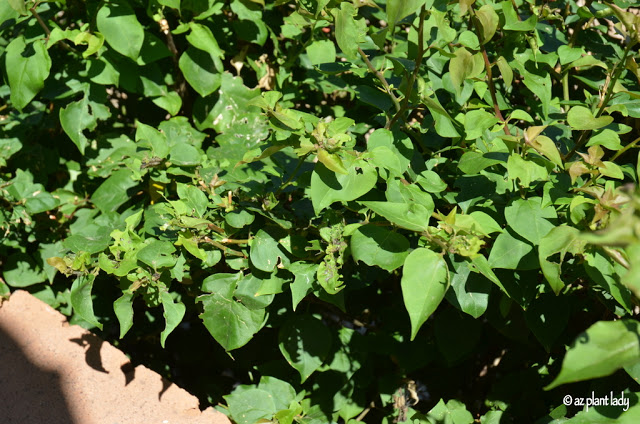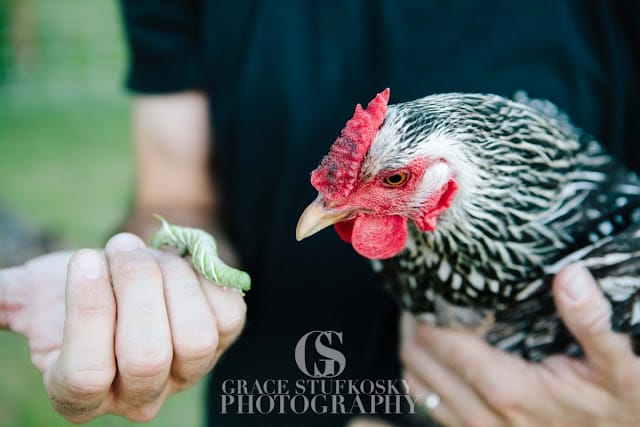I don’t think that my sister’s chicken has ever seen a caterpillar that large before.
Do you think she will eat it? Or will the caterpillar emerge victorious?
I’ll let you know at the end of this post…
Those of you who have ever grown tomatoes probably recognize this green, horned caterpillar.
If you are not familiar with this green menace, let me introduce you to the ‘tomato hornworm’.
As their name suggests, they love to eat tomatoes and the leaves on their plants.
What you may not know is that also like to eat potato, pepper and eggplants as well.
What is even worse, is that they can be a little hard to find. With their green color, they blend in well with the tomato plants. Tomato hornworms also tend to hide underneath the leaves.
At this point you may be wondering if you have these pesky caterpillars on your tomato plants. How can you tell?
Well, some telltale signs include holes eaten from the leaves and tomatoes. You may also see little green pellets (caterpillar poop) on the leaves.
The only way to know for certain is to go looking for them.
So what do you do if you find out your tomatoes are infested with these caterpillars and how did they get there in the first place?
Well, tomato hornworms grow up into moths who in turn, lay eggs on the underside of tomato leaves. The eggs hatch in about a week and the newly emerged caterpillars start eating non-stop for 4 – 6 weeks.
As if that weren’t enough bad news, as the caterpillars grow larger, they eat more. After about a month on gorging themselves, they drop into the soil where they form a cocoon and transform into a moth who will start the cycle again by laying eggs.
How can you do to get rid of them?
Well, there are a few ways to get rid of them and even help to prevent them in the future.
Tomato hornworm
– The easiest way to get rid of a current infestation of tomato hornworms is to simply pick them off and dunk them into soapy water, which kills them.
– If pulling off large, green caterpillars isn’t your thing, then you can spray them with a product that contains Bt (Bacillus thuringiensis), which infects the stomach of the hornworm, killing it. Bt is safe for animals and plants.
– There are some wasps that will act as parasites to the caterpillars and lay their eggs directly onto them. The eggs hatch and the larvae eat the caterpillar.
Now, I don’t know about you, but I’d rather not have to deal with tomato hornworms at all. So, I am all about prevention.
– In the fall, till the soil around your tomato plants. This will unearth any cocoons that are attempting to overwinter in the soil, which kills them. Do this again in spring, before planting new tomato plants. This is usually 90% effective in getting rid of tomato hornworm cocoons before the moth emerges.
Okay, so back to the chicken, caterpillar face-off…
My sister’s chicken Francie is a ‘naked-neck’ chicken and yes, she is supposed to look that way 😉
It turns out that the chickens were a little put off by the large size of the caterpillars. So, they wouldn’t touch them.
That is until… the caterpillars were cut up into smaller pieces. Then the chickens couldn’t eat them fast enough. (I know, kind of gross, isn’t it?)
**I want to thank my sister, Grace, for her fabulous pictures. You can find out more about her photography, here.

















